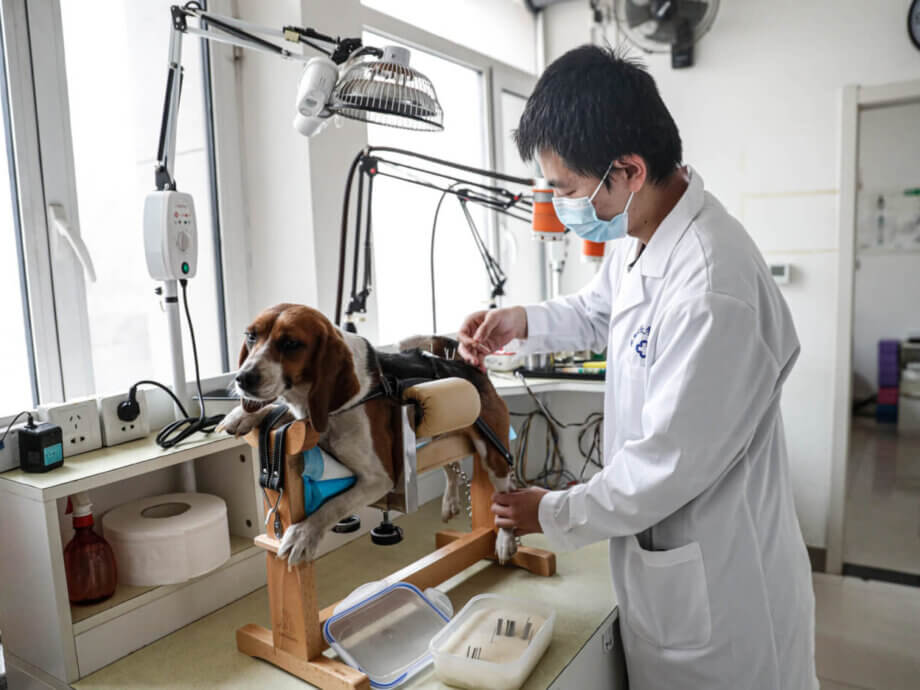China’s First Pet-Focused University Degree: Meeting the Demands of a Booming Industry
China is making history in higher education by launching its first university degree dedicated entirely to pets. This innovative program, offered by China Agricultural University (CAU) in Beijing, is a direct response to the explosive growth of the country’s pet industry and the acute shortage of skilled professionals in the field. The new four-year undergraduate major in companion animal science will welcome its inaugural class of 50 students in September, marking a significant shift in both academic priorities and industry development.
- China’s First Pet-Focused University Degree: Meeting the Demands of a Booming Industry
- Why a Pet Degree? Understanding the Industry’s Rapid Growth
- What Makes the New Degree Unique?
- Addressing the Talent Shortage: Why Skilled Professionals Are Urgently Needed
- Curriculum and Career Prospects: What Will Students Learn?
- How Does This Reflect Broader Changes in Chinese Higher Education?
- Social Media Buzz and Public Reception
- Historical Context: The Evolution of Veterinary and Pet Care in China
- Broader Implications: What Does This Mean for China’s Economy and Society?
- Challenges Ahead: Can Education Keep Pace with Industry Growth?
- In Summary
Why a Pet Degree? Understanding the Industry’s Rapid Growth
China’s pet industry has experienced remarkable expansion over the past decade. Urban households now own more than 120 million cats and dogs, and the market for pet-related goods and services has soared to over 300 billion yuan (approximately US$42 billion) in 2024. This growth is driven by a new generation of young, affluent consumers who view pets as essential companions and are willing to invest in their well-being, nutrition, and happiness.
Social trends have also played a role. Many young Chinese are choosing pets over traditional family structures, with some social media users quipping, “You don’t need to have kids, but pets are a must.” The demand for pet-friendly services, from travel accommodations to grooming and healthcare, has never been higher. Even China’s state rail operator has expanded high-speed train access for pets, reflecting the changing lifestyle of pet owners.
What Makes the New Degree Unique?
Unlike traditional animal science programs that focus on livestock such as pigs, cattle, and sheep, CAU’s new major zeroes in on companion animals—primarily dogs, cats, and horses. The curriculum is designed to address real-world industry needs, covering a wide range of topics:
- Breed variety and genetics
- Pet nutrition and metabolism
- Feed processing and formulation
- Reproductive physiology
- Animal welfare and behavior
- Pet healthcare and disease prevention
Students will spend their first year at the main campus in Beijing, followed by three years at a research institute in Yantai, Shandong province. Upon graduation, they will receive a Bachelor of Agricultural Science degree, equipping them for a variety of roles in the pet industry.
Addressing the Talent Shortage: Why Skilled Professionals Are Urgently Needed
The rapid expansion of China’s pet economy has outpaced the supply of trained professionals. There are currently about 500,000 registered pet-related businesses in China, ranging from pet food and supplies to grooming, insurance, and behavior training. However, the sector faces acute labor shortages. For example, more than 30,000 pet hospitals operate with just 40,000 certified veterinarians—barely one vet per clinic.
Yan Jinsheng, vice chairman of the China Pet Industry Association, highlights the challenge:
“The shortage of skilled professionals is one of the biggest constraints on the industry’s healthy development.”
This shortage is felt across all segments of the industry, including grooming, healthcare, training, and research. The new degree aims to fill this gap by producing graduates with specialized knowledge and practical skills tailored to the needs of the modern pet industry.
Curriculum and Career Prospects: What Will Students Learn?
The companion animal science program is structured to provide both theoretical knowledge and hands-on experience. Courses include:
- Companion animal breeding and genetics
- Nutritional metabolism and diet formulation
- Feed processing technology
- Reproductive physiology and management
- Animal welfare, behavior, and training
- Pet healthcare, disease prevention, and veterinary basics
Graduates will be prepared for a wide range of careers, including:
- Pet food research and development
- Breeding operations and genetic consulting
- Veterinary clinics and animal hospitals
- Pet behavior training and welfare organizations
- Academic research and teaching
- Government regulatory bodies and industry associations
Emerging specialties such as pet genetic testing and professional pet behavior training are also expected to create new job opportunities for graduates.
How Does This Reflect Broader Changes in Chinese Higher Education?
The launch of the pet degree is part of a broader transformation in Chinese higher education. Traditionally, university programs were supply-driven, focusing on established fields like livestock agriculture. However, the Ministry of Education (MOE) has called for a shift toward demand-led disciplines that align with economic priorities and labor market needs.
In its 2025 graduate employment notice, the MOE urged universities to anticipate industry trends and quickly roll out new, relevant programs. The pet industry’s rapid growth and talent gap made it a prime candidate for such innovation. Similar industry-aligned programs have emerged in other sectors, such as coffee science, artificial intelligence, and carbon neutrality engineering, reflecting a nationwide strategy to better match education with job market demands.
Social Media Buzz and Public Reception
The announcement of the new degree has sparked lively discussions online. Many Chinese netizens expressed excitement, with some joking they would return to university just to enroll in the “pet major.” On platforms like Xiaohongshu (Rednote), users asked whether graduate students from other fields could join, while others highlighted the strong demand for pet industry professionals.
One user summed up the sentiment: “With my dog by my side, I could study all the way to a PhD!” The enthusiasm reflects not only the popularity of pets in China but also the growing recognition of the pet industry as a serious and respected career path.
Historical Context: The Evolution of Veterinary and Pet Care in China
The rise of pet-focused education is the latest chapter in the evolution of veterinary and animal care in China. The first small-animal private veterinary practice opened in Guangzhou in 1989. Since then, the number of clinics and hospitals has grown rapidly, especially in major cities like Beijing and Shanghai. Today, there are more than 30,000 pet hospitals and countless smaller clinics serving millions of pets.
Veterinary education in China has also evolved. The introduction of a national licensure examination in 2009 helped standardize the profession and ensure a basic level of competency. However, the diversity of educational programs and the rapid growth of the industry have made it challenging to keep up with demand for highly trained professionals, especially those specializing in companion animals.
Broader Implications: What Does This Mean for China’s Economy and Society?
The launch of the pet degree is more than just an academic milestone—it signals a broader shift in China’s economy and society. The pet industry has become a new growth point for animal husbandry and a significant contributor to domestic consumption. As more Chinese households embrace pet ownership, the demand for high-quality products and services will continue to rise.
This trend also reflects changing attitudes toward animals and a growing emphasis on animal welfare, emotional well-being, and responsible pet ownership. The new degree program is likely to set a precedent for other universities and industries, encouraging further innovation and specialization in response to market needs.
Challenges Ahead: Can Education Keep Pace with Industry Growth?
While the new program is a promising step, challenges remain. The pet industry’s rapid expansion means that demand for skilled professionals will likely continue to outstrip supply for the foreseeable future. Ensuring that graduates receive both rigorous academic training and practical experience will be crucial to meeting industry standards.
Collaboration between universities, industry associations, and government agencies will be essential to develop standardized curricula, accreditation systems, and continuing education opportunities. International partnerships, such as those between Chinese and American veterinary schools, may also play a role in raising educational standards and fostering innovation.
In Summary
- China Agricultural University has launched the country’s first four-year undergraduate degree focused on companion animals, reflecting the rapid growth of the pet industry.
- The program addresses a critical shortage of skilled professionals in pet care, breeding, nutrition, and welfare.
- China’s pet industry is now worth over 300 billion yuan, with more than 120 million urban cats and dogs and 500,000 registered pet-related businesses.
- The curriculum is tailored to real-world industry needs, preparing graduates for diverse careers in veterinary care, research, and industry management.
- The initiative is part of a broader shift in Chinese higher education toward demand-driven, industry-aligned programs.
- Public response has been enthusiastic, highlighting the growing social and economic importance of pets in China.
- Challenges remain in keeping educational supply in step with industry demand, but the new degree marks a significant step forward for both education and the pet sector.












